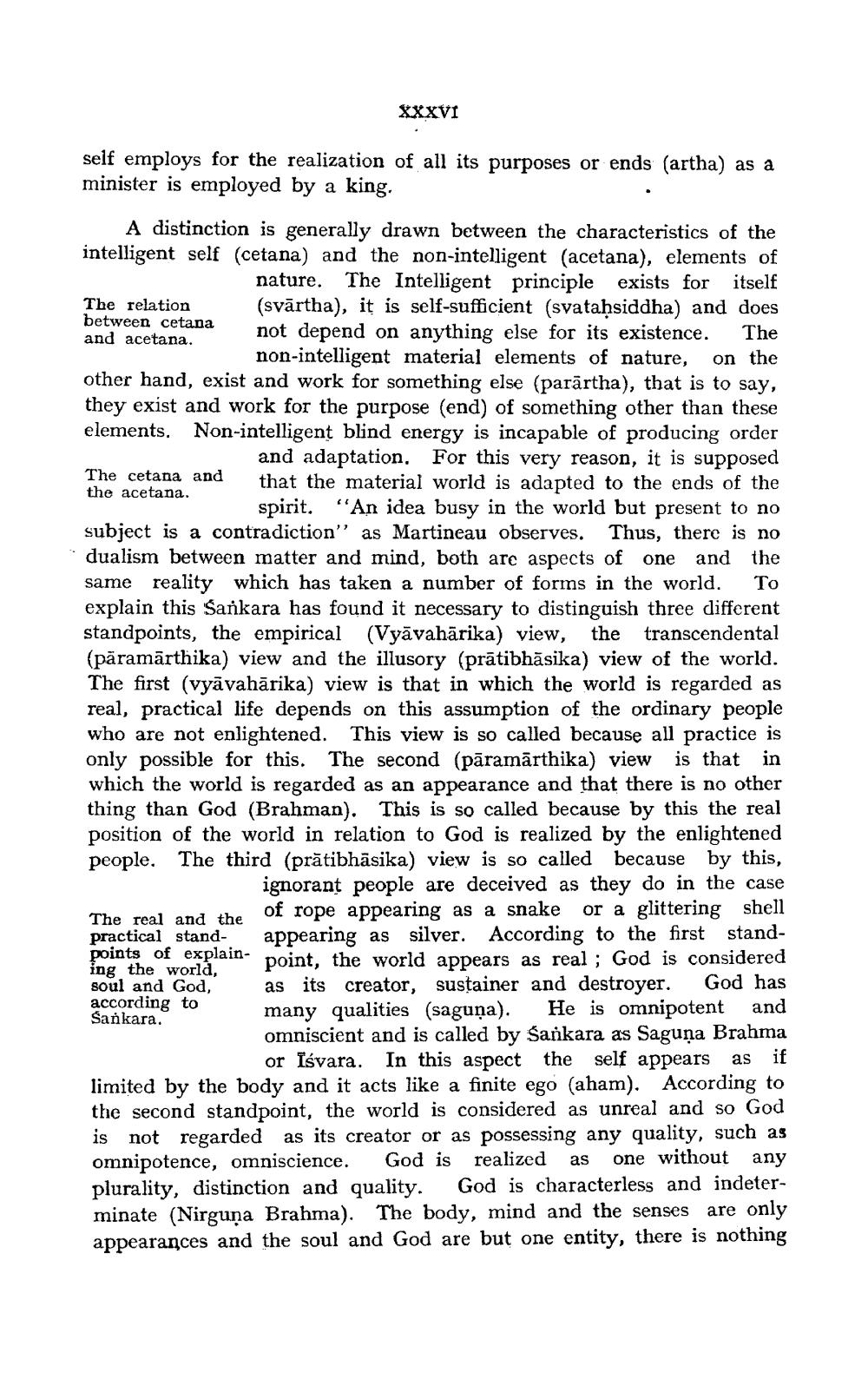________________
self employs for the realization of all its purposes or ends (artha) as a minister is employed by a king.
A distinction is generally drawn between the characteristics of the intelligent self (cetana) and the non-intelligent (acetana), elements of nature. The Intelligent principle exists for itself (svārtha), it is self-sufficient (svataḥsiddha) and does not depend on anything else for its existence. The non-intelligent material elements of nature, on the other hand, exist and work for something else (parartha), that is to say, they exist and work for the purpose (end) of something other than these elements. Non-intelligent blind energy is incapable of producing order and adaptation. For this very reason, it is supposed that the material world is adapted to the ends of the spirit. "An idea busy in the world but present to no subject is a contradiction" as Martineau observes. Thus, there is no dualism between matter and mind, both are aspects of one and the same reality which has taken a number of forms in the world. To explain this Sankara has found it necessary to distinguish three different standpoints, the empirical (Vyāvahārika) view, the transcendental (pāramārthika) view and the illusory (prātibhāsika) view of the world. The first (vyāvahārika) view is that in which the world is regarded as real, practical life depends on this assumption of the ordinary people who are not enlightened. This view is so called because all practice is only possible for this. The second (pāramarthika) view is that in which the world is regarded as an appearance and that there is no other thing than God (Brahman). This is so called because by this the real position of the world in relation to God is realized by the enlightened people. The third (pratibhäsika) view is so called because by this, ignorant people are deceived as they do in the case of rope appearing as a snake or a glittering shell appearing as silver. According to the first standpoint, the world appears as real; God is considered as its creator, sustainer and destroyer. God has and He is omnipotent many qualities (saguna). omniscient and is called by Sankara as Saguna Brahma or Isvara. In this aspect the self appears as if limited by the body and it acts like a finite ego (aham). According to the second standpoint, the world is considered as unreal and so God is not regarded as its creator or as possessing any quality, such as omnipotence, omniscience. God is realized as one without any plurality, distinction and quality. God is characterless and indeterminate (Nirguna Brahma). The body, mind and the senses are only appearances and the soul and God are but one entity, there is nothing
The relation between cetana and acetana.
XXXVI
The cetana and the acetana.
The real and the practical stand
points of explaining the world, soul and God, according to Sankara.




